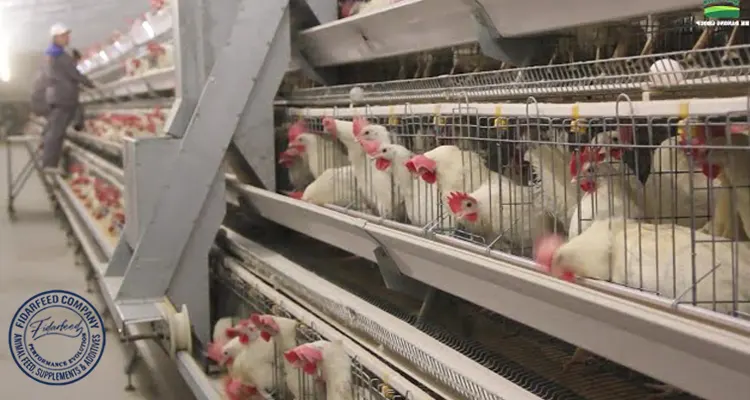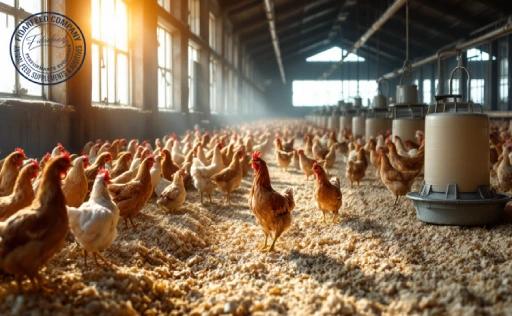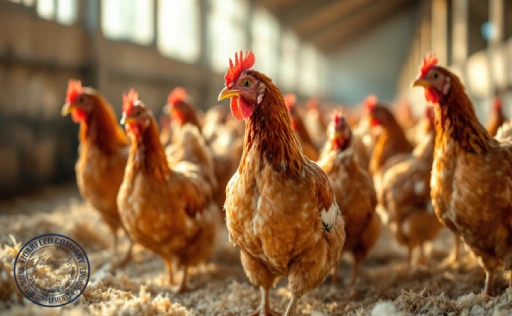Stocking density affects chicken health and egg laying more than many poultry farmers realize. The number of birds housed within a given space directly influences their well-being, productivity, and overall profitability. If the density is too high, stress, disease, and poor egg production can become major concerns. On the other hand, providing the right amount of space allows hens to thrive, leading to better health and higher yields. Understanding the role of stocking density is essential for both experienced and novice layer breeders looking to optimize their operations. Let’s explore how stocking density impacts poultry and what you can do to maintain the right balance.
Understanding Stocking Density and Its Importance in Poultry Farming
Stocking density refers to the number of birds kept per unit of space, typically measured in birds per square meter. It is a crucial factor in poultry farming because it affects bird behavior, health, and egg production. The right balance ensures that chickens have enough space to move, access feed and water easily, and exhibit natural behaviors like dust bathing and perching.
Learn more about: Active Probiotic Yeast for Poultry
Regulations and industry guidelines vary depending on the farming system-cage, barn, or free-range. For example, in cage systems, each layer hen typically requires around 450-600 cm² of space, while in alternative systems like free-range farming, the minimum requirement is often 4-6 birds per square meter. These standards help ensure a balance between productivity and animal welfare.
How High Stocking Density Can Impact Chicken Health Negatively
Overcrowding is one of the biggest challenges in commercial poultry farming. When too many hens share limited space, stress levels rise, leading to a host of health issues. Chickens are naturally social animals, but excessive crowding can trigger aggressive behavior, feather pecking, and even cannibalism.
Learn more about: Sudden Dietary Changes and Broiler Performance: Causes, Effects, and Solutions
Moreover, high stocking densities increase humidity and ammonia levels from accumulated manure. Poor air quality can lead to respiratory diseases, eye irritation, and a weakened immune system. Studies have shown that chickens in overcrowded conditions are more susceptible to infections like coccidiosis and bacterial diseases due to increased contact with contaminated litter.
Learn more about: How To Start Egg Laying Chicken Business: Your First Steps
Additionally, excessive stocking density makes it harder for birds to access food and water, leading to uneven growth and malnutrition. Weak or underweight hens are less productive and more prone to health complications, ultimately affecting egg production rates.
Optimal Stocking Density: Striking the Right Balance for Healthier Hens
Finding the ideal stocking density is key to maintaining a healthy flock. The goal is to provide enough space for movement, proper ventilation, and easy access to food and water while maximizing efficiency.
Scientific research suggests that maintaining a stocking density of 5-7 birds per square meter in barn systems leads to optimal health and productivity. In cage-free and free-range systems, additional space allows hens to exhibit natural behaviors, reducing stress and aggression.
Learn more about: How Does Salmonella Get Into Chicken? Causes and Prevention Tips
Farmers should also consider environmental factors such as temperature control, lighting, and air circulation. Proper ventilation systems and regular litter management help maintain cleanliness and prevent disease outbreaks, ensuring that the flock remains in peak condition.
Stocking Density’s Direct Link to Egg Laying Performance
The impact of stocking density on egg laying cannot be overstated. When hens are overcrowded, their stress levels increase, leading to hormonal imbalances that disrupt egg production. Studies indicate that birds kept in optimal stocking conditions lay more eggs per cycle, with higher shell quality and fewer deformities.
Learn more about: The Benefits of Probiotics in Poultry: A Must-Know Guide
Chickens in overcrowded environments also experience more frequent disturbances, which can disrupt their laying schedules. A calm, spacious environment encourages consistent laying patterns and improves overall egg yield.
Additionally, the feed conversion rate is more efficient when stocking density is well-managed. Hens with adequate space can access their feed without excessive competition, ensuring proper nutrition intake, which directly translates into better egg quality and higher production rates.
Practical Tips for Managing Stocking Density to Maximize Chicken Health and Egg Yield
- Follow Industry Guidelines: Adhere to recommended space allocations for different farming systems to ensure optimal bird welfare and productivity.
- Improve Ventilation and Airflow: Proper airflow reduces ammonia buildup and keeps humidity levels in check, preventing respiratory issues.
- Monitor Bird Behavior: Watch for signs of stress, aggression, or feather pecking, which may indicate overcrowding.
- Adjust Feeder and Drinker Placement: Ensure all birds have equal access to feed and water to promote even growth and nutrition.
- Use Enrichment Tools: Providing perches, nesting boxes, and dust baths can reduce stress and encourage natural behaviors.
- Regularly Assess Stocking Density: As birds grow, their space requirements change. Adjust density accordingly to maintain a healthy flock.
Learn more about: Boosting Broiler Breeder Egg Production: A Comprehensive Lighting Guide
The Long-Term Benefits of Proper Stocking Density for Sustainable Poultry Farming
Maintaining the right stocking density is not just about short-term productivity; it also has long-term benefits for sustainable poultry farming. Hens kept in well-managed environments have longer lifespans, reduced mortality rates, and require fewer veterinary interventions, ultimately reducing costs.
Furthermore, good stocking density practices improve overall farm efficiency. Healthier birds produce higher-quality eggs, leading to better profitability for farmers. Sustainable stocking densities also align with animal welfare standards, enhancing consumer trust and marketability of eggs.
In conclusion, stocking density plays a vital role in chicken health and egg laying. By striking the right balance, farmers can create a stress-free environment that enhances productivity while ensuring the well-being of their flocks. What are your thoughts on stocking density in poultry farming? Feel free to share your experiences, ask questions, or leave a comment below!








